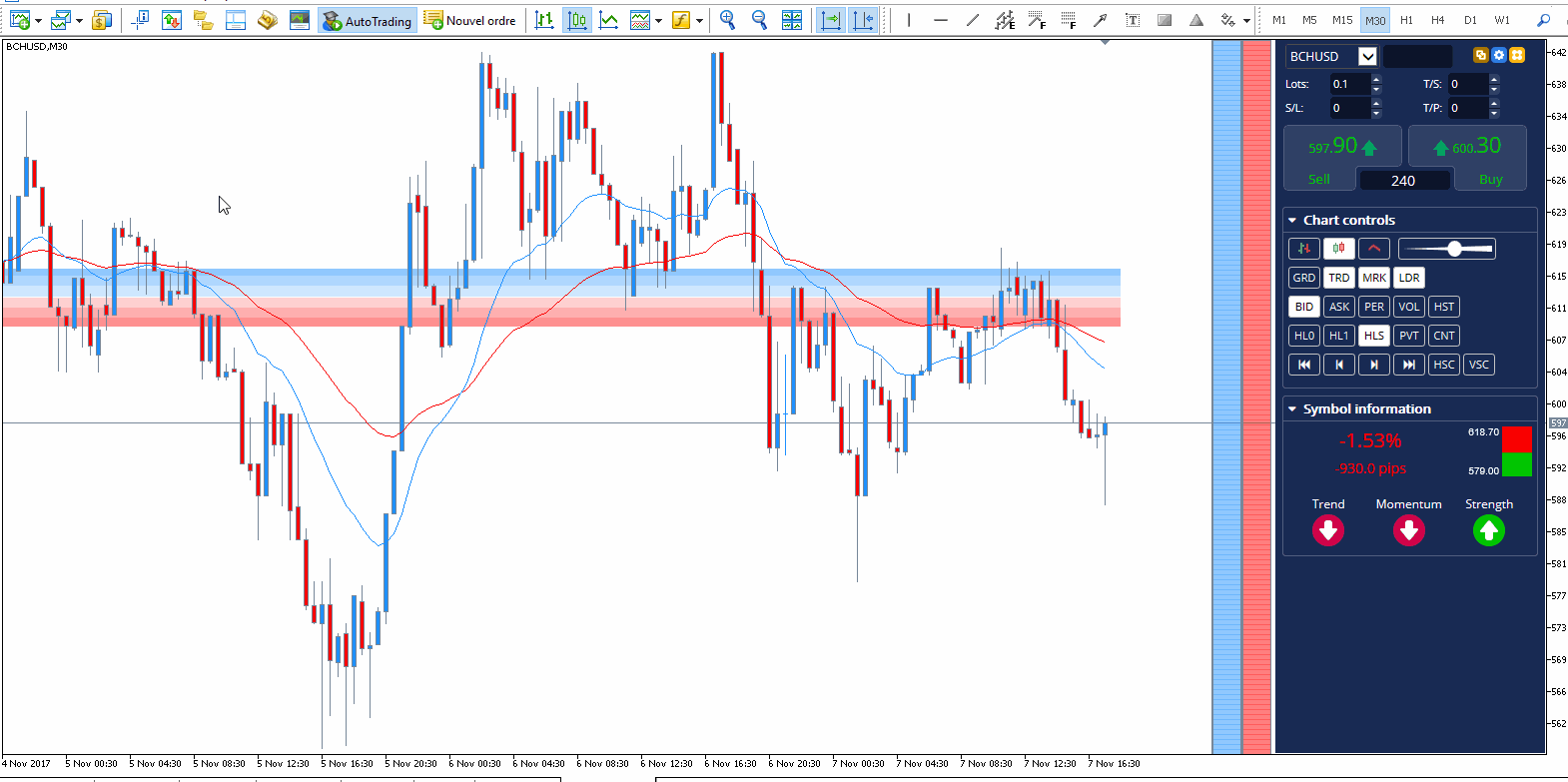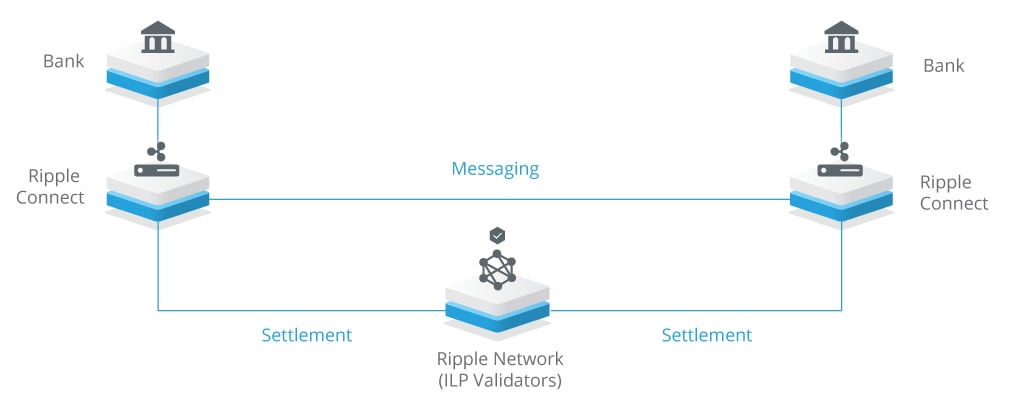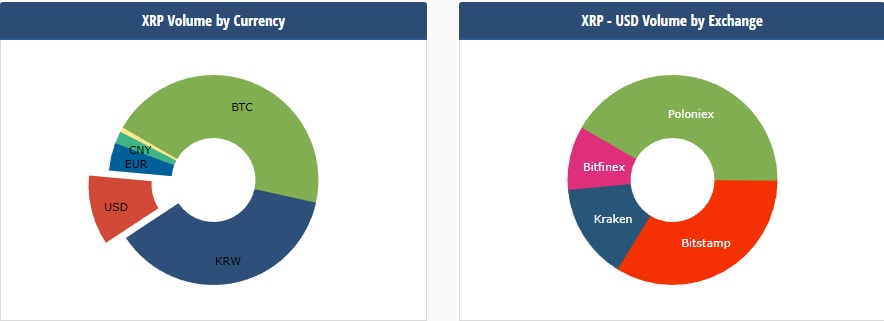What is the Ripple?

Most of you are familiar with Bitcoin, but the cryptocurrency family extends much further than that. You have also heard of Litecoin and Ether.
Another crypto-currency causing waves in the market is ... Ripple. Although Ripple has its own currency, its value may be more visible because of its ultra-fast payment system.
This article examines Ripple in detail and explains the key aspects of this cryptocurrency in question. You will discover how Ripple works and what are the main differences between Ripple and Bitcoin.
Before diving into this, let's start with the basic question: What is Ripple?
Ripple Definition
Ripple is considered a San Francisco start-up. The company has designed a payment system similar to the Blockchain. It is a payment protocol that works similarly to a payment system, a delivery network, and a currency exchange. It works with cryptocurrency, fiduciary currencies, and commodities.
Ripple allows customers to integrate the protocol into their own systems. The National Bank of Abu Dhabi has recently started using technology for some of its transactions, particularly for cross-border transactions. It allows its clients to transfer funds in real time.
Ripple uses a chain of blocks similar to Bitcoin, except that the cryptocurrency Ripple is called " Ripples ".
In terms of market capitalization, Ripple is the third-largest cryptocurrency - after Bitcoin and Ether.
What Is The Abbreviation Of Ripple?
The shortcut for Ripple is simply XRP. Ripple can also be combined with other currencies, as well as with USD (US Dollar) and EUR (Euro).
The number of currency pairs Ripples vs. US Dollar is, therefore, XRP / USD.
In case you do not know it already, it is now possible to trade Ripple (XRP / USD) on a risk-free demo account with Admiral Markets! Try it today ...
Have you ever wondered if it was possible to speculate on the cryptocurrency market with only € 10?
It's now possible with Admiral Markets and even easy thanks to MetaTrader 5 Supreme Edition!
Indeed, Admiral Markets now has several cryptocurrencies in its financial assets, which can be traded, such as:
Bitcoin CFDs (BTCUSD)
CFDs Ether (ETHUSD)
CFDs Litecoin (LTCUSD)
CFDs Ripple (XRPUSD)
CFDs Bitcoin Cash (BCHUSD)

Ripple (CFDs XRPUSD): The Next Crypto Currency To Explode?
Have not you ever thought that it would be interesting to bet on cryptocurrencies with very little money, hoping to see the explosion of cryptocurrency like Bitcoin?
The Mini Terminal tool of MetaTrader 5 Supreme Edition does the math for you!
You only have to decide on your acceptable loss level, which is your Stop Loss. Once you know where to place your Stop Loss, you only have:
Enter the number of pips or points in the "S / L" part of the "Lot Size Calculation" included in the Mini Terminal
Enter in the lower part "Fixed cash risk: EUR" the amount in euro that you are willing to risk
Click on "Set lots"
Then the Mini Terminal calculates in less than a minute the number of lots needed to represent a stop loss of 10 €, according to your criteria.
Now all you have to do is click on the "BUY" button on the Mini Terminal of MetaTrader 5 Ultimate Edition.
We remind you that this wonderful tool is also available for MT4 with MetaTrader 4 Supreme Edition!
You can then find that your position is open on the market with a stop loss automatically representing 10 € of risk in the chart you chose.
Admiral Markets provides free and unlimited demo accounts to give you access to the real world cryptocurrency market. These accounts allow you to try trading Bitcoin CFDs or Ripple CFDs safely!
What Is The Difference Between Ripple And Bitcoin?
Ripple is considered the competitor of Bitcoin and there are certain advantages. Ripple does not depend on a single company to secure and manage its transaction database. Thus, there is no waiting for block confirmations. According to Market Mogul, there is a difference between the time to settle Bitcoin and Ripple. The time to settle with Bitcoin increased, reaching 168 minutes on March 27, while Ripple took an average of 3.7 seconds. Money transfers between Spain and Mexico were undertaken by the BBVA, and it was discovered that Ripple needed only a few seconds, whereas a standard transfer would take four days to unwind.
Both cryptocurrencies share many similar characteristics, and Ripple is similar to Bitcoin with some differences:
Ripple offers a faster settlement time : as explained above.
Ripple uses an iterative consensus process : Bitcoin uses mining.
Currency Network and Transactions : Bitcoin is a decentralized cryptocurrency, while Ripple is essentially a transaction network that also contains a cryptocurrency - Ripples.
Can you Miner Ripple?
No, Ripple cannot be undermined. Ripple started with a fixed number of Ripples (XRP) and has no built-in extension, according to the rules of the Ripple protocol. Therefore, no extraction of new parts is necessary.
The total number of XRP created is 100 billion, but the XRP distribution is controlled by Ripple. This has been criticized by Bitcoin sympathizers who consider that Bitcoin has an advantage because there is no centralized control over its creation or distribution.
Ripple responded by announcing its intention to freeze 88% of its XRP assets, but sell one billion XRP each month. The freeze and regular flow will allow traders and investors to rely on a certain level of predictability with respect to supply.
How Does Ripple Really Work?
Ripple focuses on their role in the "global settlement network," which simply allows financial parties, like banks, to reduce transaction costs. At the same time, Ripple also offers an improved service with direct and instant transactions. The image below shows how Ripple allows payments to cross the globe.

Payments are cryptographically secure and have been designed to fit the existing infrastructure of a bank. Ripple highlights the following as its four main features:
Distribution: banks can deal directly with each other without intermediate contact;
Security: confidentiality of the transaction;
Evolution: high levels of treatment;
Interoperable: Ability to connect multiple networks with each other.
The Ripple network essentially makes payments faster - almost instantly - cheaper, more secure and with direct access. It is therefore not surprising that Ripple is increasingly being used by the banking sector, which has not capitalized as much on new technologies as on other sectors of the industry.
Ripple uses Blockchain technology?
Yes, it uses a structure that processes payments in a similar way to the blockchain concept. Ripple uses a "general sharing book to process transactions that allow it to work across borders and with any size of payment."
Ripple XRP currency helps facilitate transactions between two parties, in the event that no direct exchange is possible. XRP has no counterparty risk because it does not depend on a third party.
Ripple Logo

Who invented Ripple
Ripple is believed to have been founded by Ryan Fugger, but has experienced great development since its initial creation.
Ripple's growth began in 2004 when RipplePay's creation was created by Ryan Fugger. In 2011, the system was redesigned, making it faster and much more energy efficient than Bitcoin. In 2012, OpenCoin, Inc. was formed.
Shortly after, the Ripple Transaction protocol (RTXP) was developed based on Fugger concepts. The protocol reduces the rates and waiting times of the traditional banking system.
Since 2012, Ripple has also focused on expanding the banking market.
What Does Ripple's Future Look Like?
Quite simply, it looks brilliant. Ripple's network is much faster in payment processing and is the subject of multiple partnerships with global companies:
*60 institutions around the world, including famous companies like UBS, RBC, UniCredit and Santander.
*40% of Japanese banks will be connected to Ripple.
*RBS and BAML will use Ripple for retail and commercial services in 2018.
*The National Bank of Abu Dhabi uses Ripple for international transactions (as mentioned before).
Source: Market Mogul
Of course, Ripple is not as popular as his famous counterpart Bitcoin. However, with the growing interest in cryptocurrencies in general and with the extraordinary speed of the Ripple network and the ability to offer payment solutions, it seems that Ripple will be a top candidate to become the market leader over the years. coming years. Below you can see the volume division for XRP:
*By currency: Bitcoin, South Korean won, US dollar, Euro and Yuan
*By market where it changes: Ploniex, Bitstamp, Kraken and Bitfinex

Source: Cryptocompare.com
What does Ripple rely on?
Ripple works independently of any central bank in the same way as other cryptocurrencies, such as Bitcoin, Ether, and Litecoin. This is a major difference from well-known currencies like the US dollar and the euro. These currencies are disseminated and printed in the United States and the EU by the respective central banks.
Ripple decides the flow of XRP, which is set at one billion XRP every month.
Which banks use the Ripple?
RippleNet currently has 11 of the 100 largest banks in the world in terms of total assets as customers, which are in various stages of commercial deployment of the Ripple payment solution and this number continues to increase month after month.
Here are a few:
MUFG - the fifth-largest bank in the world with $ 2.6 trillion in assets - was one of the first customers to join RippleNet.
Crédit Agricole - the 11th World Bank (and the third largest bank in Europe) with 1.82 trillion dollars of assets - is also responsible for dealing with actual remittances for its employees between France and Switzerland.
Four other RippleNet members also rank among the top 20 global banks, including:
Bank of America
Agricultural credit
Mizuho Financial Group
Santander
The largest financial institutions therefore see the value of RippleNet, not only in terms of results, but also because Ripple allows to offer their customers an improved payment service allowing them to gain market share and free up capital for other investments and activities.
Of the remaining 100 largest banks, according to assets worldwide, eight others are also members of RippleNet, including:
UBS
RBC
HSBC
UniCredit
Standard Chartered
Westpac
Western Union
BMO
Three banks in India, the United Arab Emirates and Singapore have also adopted the RippleNet as a means of sending cross-border funds.
These banks have announced their decision to adopt Ripple's block-based payment platform, RippleNet, as a way to transact business abroad.
These three banks being:
Axis Bank
Standard Chartered
Rakbank
Axis Bank in India and Standard Chartered in Singapore will use RippleNet to borrow the "$ 15 billion trade route" between India and Singapore. Axis Bank will also operate the overseas payments market between Rakbank in the United Arab Emirates and India, a channel through which $ 12.6 billion flows annually.
Ripple's blockchain platform reduces the time and money associated with sending payments from one country to another.
The National Bank of Abu Dhabi has also announced its intention to adopt the Ripple protocol for all transactions abroad.
The National Bank of Abu Dhabi reportedly incorporated the Ripple protocol into its existing infrastructure. The result is that the bank's regional clients will have the opportunity to transfer funds to beneficiaries' accounts instantly. All their transactions will take place in real time.
The fact that the United Arab Emirates, the seat of the bank in question, is one of the world's leading remittance providers, suggests that Ripple technology will be widely used in this partnership.
Several large banks have started testing programs and integrated Ripple into pilot projects.
For now, the big banks that use or test Ripple, like UBS, UniCredit, SAP or Western Union, use it only to make transfers between their own subsidiaries in different countries.
Finally, American Express and Santander announced that they would use RippleNet to process international payments.
The San Francisco-based start-up assists financial institutions to process international payments using blockchain and collaborates with more than 100 companies including:
Andreessen Horowitz
Google Ventures
As well as banks such as:
Standard Chartered
Banco Santander
American Express
What are the risks of trading Ripple?
As with any financial asset, there is a risk that the price will move up and down. Ripple is subject to market fluctuations, such as demand and supply. Price fluctuation, however, is what allows traders to trade.
Given the wide acceptance of Ripple as a financial network by large financial companies and banks, it seems unlikely that major disruptions will occur in the intermediate future.
Each Ripple account must have a small reserve of 20 XRP with a transaction fee of 0.00001 XRP for each transaction. These actions are implemented to fight against hackers who want to overload the network. But, overall, these costs are indeed very low.
Is Ripple Legal?
The answer is yes. The regulation varies from country to country, but you can expect to see national financial authorities interested in Ripple and other virtual currencies, possibly with regional regulators.
In addition, Ripple has refocused on the XRP markets, and Japan has already passed a law standardizing and regulating these digital currencies as BTC and XRP 10.
Can we trade Ripple safe?
Yes, it is just as safe to trade as Bitcoin, Ether, Litecoin or any other commodity, for that matter. We propose to trade the pair XRP vs USD.
Good post...very helpful
Thanks for the compliment.